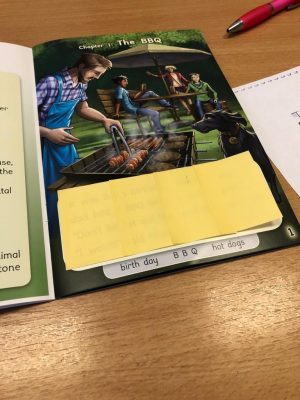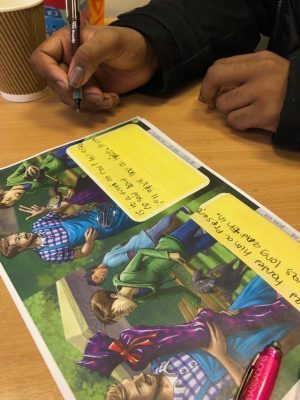Most teachers approach teaching in a child-centered way so dictation goes against the grain. It may seem old-fashioned and yes, a bit dictatorial. But actually, it is a really powerful tool which is particularly useful for struggling or emerging readers and spellers. What more, kids enjoy it because it consolidates their learning and they experience success.
So, what is so great about dictation?
Dictation develops phonics concepts and skills:
- Dictation demonstrates how encoding is the reverse of decoding. When we read we decode the letters into sounds and blend them into words. When we spell we says the sounds in words and spell them with letters.
- Dictation brings success. Because the teacher controls the words that the student is expected to spell correctly – the student will experience a good measure of success. Many of our students fear writing and spelling because they have few skills to spell accurately and experience failure.
- It develops good spelling habits. Dictation encourages the student to use spellings he/she has learned to spell words when writing independently. This is important because many students try to remember the shape of the word (unsuccessfully) and do not attempt to sound words out.
Decodable texts are useful resources for dictation. Teachers can use them for consolidation of a specific phonics focus. He/she can compose a sentence based on the text that the student has read.
Using a decodable text the that the student has read provides the activity with context and meaning.
Here is an example of how a teacher used the series That Dog! with an older, struggling student:
Step 1: Read and reread the text so that the student can read it independently and knows the story.
Step 2: Cover the text on the page with a large post-it note.

Step 3: Dictate a sentence to the student about the illustration in the page. Make sure he/she has been taught the spellings in the word that are dictated. Offer any words with spellings the student has not yet learned.
If the student needs more scaffolding, write the lines for the sounds in the words. This will help the student sound out the words.

Step 4: Re-read the story using the words the student has written.
Find out more about our That Dog Series of books.
We also publish a reproducible activity workbook that complements this reading series offering all the reading and spelling activities that would precede a dictation activity. Find out more here.

